YOU
Popular topics and icon codes
Coming out supportHate crime and reporting hate crime
Housing and homelessness
Labels, acronyms, gender pronouns, and symbols
Gay’s the Word bookshop
LGBT+ Forums (London)
LGBT+ News Sources External link | Internal link
Film clip | Sound clip | Book
Organisation/ service Helpline | Chat
Map | Note/ warning Ask us anything
About this website
Disclaimer Back to top
ABOUT YOU
Do it your way
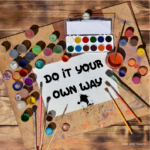 Welcome to our world and the journey. As you can see, we take ourselves seriously but not too seriously. And introductions are usually very dull, so you’re not going to get one, at least not in the traditional sense.
Welcome to our world and the journey. As you can see, we take ourselves seriously but not too seriously. And introductions are usually very dull, so you’re not going to get one, at least not in the traditional sense.
YOU aims to be supportive, straight-talking and fun and should help you get the best out of being gay, particularly if you’re starting out or questioning your sexuality or gender.
Getting the best out of YOU should be the same as getting the best out of life: do it your way! Please let us know if you have any suggestions as to how we can make YOU better.
100 Basic Signs in British Sign Language (BSL) | Commanding Hands | 4 Apr 2020 | 14m 48sLearn 100 basic signs in British Sign Language. Back to top
Sex, gender and sexuality
The spectrum
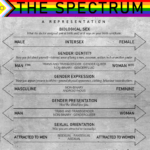 Today’s younger 21st-century generation has a significantly different understanding of these issues than previous generations, embracing an evolving language that better describes who they are and how they feel.
Today’s younger 21st-century generation has a significantly different understanding of these issues than previous generations, embracing an evolving language that better describes who they are and how they feel.
Also, talking about sex, gender expression, gender identity, and sexual orientation can be daunting for those who were raised with a more fixed or narrower view of gender (a man or woman), sex (male or female), or sexuality (gay or straight).
For some, our sexuality and gender identity are clear(er); for others, less so and can be more fluid.
The spectrum illustrated here (and there are variations) can help visualise how you feel at any given time.
“If you were born with a penis, society expects you to look, act and dress in one way, and if you were born with vulva, society expects you to be the opposite. Many people assume that the sex you were assigned at birth (eg: male) will determine your gender identity (man), your gender expression (masculine) and your sexual orientation and behaviour (straight). Men are supposed to be dominant, rational and providers while women are expected to be submissive, emotional and nurturing. That’s not for everyone! People identify in many ways—in between and outside of the categories of man/ woman, male/ female, masculine/ feminine and gay/ straight. Our lives are much more complex than the pink and blue boxes set by the gender binary.” Send the Right Message | US
Check out our A-Z glossary of words and terms, including …
Pansexual | MEN R US
Gender fluid | MEN R US
Nonbinary | MEN R US
Asexual | MEN R US
Aromantic | MEN R US
Demisexual | MEN R US
Grey | MEN R US
Books
Ace Voices | Eris Young | Jessica Kingsley Publishing | 2022“How do we experience attraction? What does love mean to us? When did you realise you were ace? This is the ace community in their own words. Drawing upon interviews with a wide range of people across the asexual spectrum, Eris Young is here to take you on an empowering, enriching journey through the rich multitudes of asexual life.”
Bi: Bisexual, Pansexual, “Fluid, and Nonbinary Youth | Ritch C. Savin-Williams | NYU Press | 2021
“Ritch Savin-Williams, brings bisexuality to centerstage at a moment when Gen Z and millennial youth and young adults are increasingly rejecting traditional labels altogether. Drawing on interviews with bisexual youth from a range of racial, ethnic, and social class groups, he reveals to us how bisexuals define their own sexual orientation and experiences—in their own words.” Gay’s the Word
66 Marchmont Street, London WC1N 1AB
The oldest LGBT+ bookshop in the United Kingdom. Back to top
What does gay mean?
The word gay is most commonly used to describe people who are physically and romantically attracted to other people of the same gender (male or female). Simply put men who have sex with other men, and fall in love with men; and women who have sex with other women, and fall in love with women.
While the word gay is used for both men and women, gay is usually used to describe men while women are described as lesbians.
Sex, gender, and sexuality
Before we say more about sexuality (being gay) there are some basics we should cover first:
- sex (assigned at birth)
- gender; gender identity, and gender expression
- sexuality
They are often lumped together though they are different parts of who we are.
Back to topYour sex assigned at birth
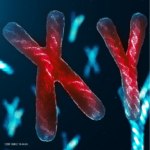 Your sex assigned at birth is the biological and physical characteristics used to define people as male or female. These include:
Your sex assigned at birth is the biological and physical characteristics used to define people as male or female. These include:
- X and Y chromosomes
- whether you have external or internal sex organs (penis or vagina)
- types and levels of hormones
- hair growth
- breast development
- what is recorded on your birth certificate
Some people are born intersex and have characteristics that don’t fit typical definitions of male and female.
LGBT+ Glossary | MEN R USCheck out our awaesome glossary of LGBT+ words and terms. Back to top
Your gender identity
 Your gender is how you feel about yourself:
Your gender is how you feel about yourself:
- Your internal and personal sense of being a boy or man, or a girl or woman, both or another gender
- The way you communicate, behave and identify with others
- The acceptance or non-acceptance of your ‘membership’ to society and attitudes and behaviours it expects of you
It’s not about whether you were born with a penis or a vagina.
Gender or gender identity is generally accepted to be a social invention and hundreds if not thousands of years old, depending on whether you want to look at more recent times or go back to the year dot. This means it does not exist naturally but rather is a series of ideas, rules, conventions, expectations that have evolved to enable society to work, and work better (if usually for the majority). However, this may not reflect how you truly feel, behave, or define yourself so society’s categories or pigeonholes for what is masculine and feminine have always been acceptable for some while less so for others.
Illustrating Gender | Gerard Coll-Planas and Maria Vidal.Non-binary genders and gender variants
Terms primarily used by the LGBT+ communities, male and female genders are also referred to as gender binary, binary meaning composed of or involving two things (male and female). Non-binary genders refer to any gender that does not fit within the binary of male and female, genderqueer, being an example.
The term is also used by individuals wishing to identify as falling outside of the gender binary without being any more specific about the nature of their gender. For example, a person might say “I’m not sure if there is a term for my gender but I know it’s non-binary” or “I consider myself as gender variant.”
What are gender pronouns and why is it important to use the right ones? | The Conversation | 15 Oct 2021How a gender conspiracy theory is spreading across the world | The Conversation | 23 Mar 2020
What it means to identify as non-binary | HuffPost | 8 Dec 2018
Non-binary people aren’t a new phenomenon: we’ve been here as long as humans have existed | HuffPost | 5 Dec 2018 Genderqueer | Wikipedia Things not to say to non-binary people | BBC 3 | 7m LGBT+ Glossary | MEN R US
Check out our awaesome glossary of LGBT+ words and terms. Back to top
Your gender expression
Gender expression is how a person chooses to outwardly express (show) their gender. For example:
- Choice of clothing
- General physical appearance
- Behaviour toward others
- Way they carry themselves
- Way they speak
Your sexuality
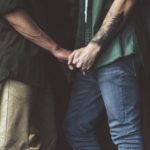 Your sexuality or sexual orientation is who you are attracted to romantically and/ or sexually.
Your sexuality or sexual orientation is who you are attracted to romantically and/ or sexually.
We should also include romantic orientation because we may have strong romantic relationships which do not necessarily involve sex, and where sex in itself is not necessarily the final goal or endpoint.
- Gay and lesbian (or homosexual) if you are attracted to people of the same sex or gender
- Bisexual or bi if you are attracted to both men and women
- Pansexual is the sexual, romantic or emotional attraction towards people regardless of their sex or gender identity
- Straight (or heterosexual) if you are attracted to people of the opposite sex or gender
- Asexual if you are not sexually attracted to either men or women
- Others self-identify as Queer because they feel sexual attraction isn’t about labels and/ or it’s a political statement
There are other ways to identify your sexuality but you should not feel pressured to label yourself (or be labelled) in a way that makes you feel uncomfortable. While the sexual orientations listed here are more usual, more emerge as we learn, and LGBT+ people self-define. For example:
- “The survey received 108,100 valid responses from individuals aged 16 or over who were living in the UK and self-identified as LGBT or intersex. Sexual orientation: 61% of respondents identified as gay or lesbian and a quarter (26%) identified as bisexual. A small number identified as pansexual (4%), asexual (2%) and queer (1%).” | The National LGBT Survey | Government Qualities Office; pg.8 | 2018
- “More than 1 in 5 LGBTQ youth described themselves as something other than gay, lesbian, or bisexual. While 78% responded that their sexual orientation was gay, lesbian, or bisexual, a full 21% selected the option for “something else.” These included demisexual, panromantic sexual, ace spectrum, grey sexual and polysexual. | Research Brief: Diversity of Youth Sexual Orientation | Trevor Project | 2019
Check out our awesome glossary of LGBT+ words and terms. Back to top
To be, or not to be, queer
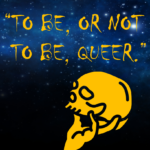 The meaning of ‘queer’ has changed a lot over recent decades. From being a slur to being reclaimed by some LGBT+ people and being rejected by others. The short answer is that ‘queer’ means different things to different people.
The meaning of ‘queer’ has changed a lot over recent decades. From being a slur to being reclaimed by some LGBT+ people and being rejected by others. The short answer is that ‘queer’ means different things to different people.
There’re lots of reasons why people identify with ‘queer’, either individually or as an umbrella term. It encompasses a wide range of identities and doesn’t risk excluding groups that the acronym may leave out. Some people find queer’s ambiguity appealing since it gives a sense of community without the need for a more specific label. You might be gay, I might be trans – but we’re both queer, and that brings us together.
For some, using ‘queer’ also aims to be an all-inclusive, a unifying umbrella term that includes people who are same-gender attracted and gender diverse as well as the intersections of people and identities within our community. Also, people like it because it’s easy to say and has a whole lot fewer syllables than LGBTIQ and overall, it’s easier to use and remember, especially if this is all new to you.
There are people who dislike the term, mostly due of the fact that it has also been a term that’s used as a slur (a word people use with hate). In the 1960s onwards, people used the word queer as a weapon, usually saying it when attacking or trying to humiliate LGBTIQ people. It wasn’t until the 1980s when activists began to reclaim it, writing it on banners and flags when marching and protesting.
To be or not to be queer | MEN R USQueer (LGBT+ Glossary | MEN R US Back to top
Lesbians and lesbianism
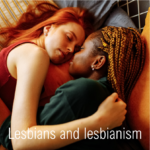 Lesbianism is the sexual and romantic desire between women. The word comes from “Lesbos”, the Greek island in the Mediterranean. Lesbos was home to Sappho, a Greek poet who explored themes of women’s lives. While some women use the term ‘lesbian’ to describe themselves, others prefer other terms such as ‘gay’ or ‘queer’, while others prefer no label at all.
Lesbianism is the sexual and romantic desire between women. The word comes from “Lesbos”, the Greek island in the Mediterranean. Lesbos was home to Sappho, a Greek poet who explored themes of women’s lives. While some women use the term ‘lesbian’ to describe themselves, others prefer other terms such as ‘gay’ or ‘queer’, while others prefer no label at all.
For some, the term “dyke” is offensive slang for lesbian. While its origins are a derogatory/ homophobic slur meaning masculine or butch, it has been reclaimed by some women as a positive to describe themselves as tough, resilient and/ or assertive. Note: a dike (with an ‘i’) is a natural or artificial barrier used to manage/ regulate water levels.
Historically, there are far fewer mentions of lesbianism than male homosexuality, primarily due to historical writings and records primarily written by men, focusing on men. Imagine that?!*
Lesbian | WikipediaList of gay, lesbian or bisexual people | Wikipedia
I Think I Might Be Lesbian | Advocates for Youth | USA
Lesbian Stories | I’m From Driftwood
List of gay, lesbian or bisexual people | Wikipedia
The Lesbian Project | The Lesbian Project
KENRIC Lesbian Social Group
DIVA Magazine
Mint Out and Wild (Festival)
Festival for LGBTQ+ women and those who are non-binary. Hidden from history? The psychiatric treatment of lesbians and bisexual women | University of Lancashire
Pride of Place: queer women of England | Google Arts and Culture
Creative Lesbians and Gay Men | Historic England
Books
All The Things She Said: Everything I Know About Modern Lesbian and Bi Culture | Daisy Jones | Hodder & Stoughton | 2022Girls Can Kiss Now: Essays | Jill Gutowitz | Simon & Schuster, Inc | 2022
The Times I Knew I Was Gay | Eleanor Crewes | Virago | 2020
Rubyfruit Jungle | Rita Mae Brown | Penguin Classics | 2015
The Well of Loneliness | Radclyffe Hall | Penguin Classics | 2015 Gay’s the Word
66 Marchmont Street, London WC1N 1AB
The oldest LGBT+ bookshop in the United Kingdom.
“A modern, personal guide to the culture of queer women and everyone in between. All The Things She Said explores the nature of 21st century queerness. Lesbian and bi culture is ever-changing and here, journalist Daisy Jones unpicks outdated stereotypes and shows how, over the past few years, the style and shared language of queer women has slowly infiltrated the mainstream. (Think less hemp sandals, IKEA trips and nut milks and more freedom, expression, community. And Cate Blanchett.)” Girls Can Kiss Now: Essays | Jill Gutowitz | Simon & Schuster, Inc | 2022
“A fresh and intoxicating blend of personal stories, sharp observations, and laugh-out-loud humor. This timely collection of essays helps us make sense of our collective pop-culture past even as it points the way toward a joyous, uproarious, near—and very queer—future.” The Times I Knew I Was Gay | Eleanor Crewes | Virago | 2020
Ellie always knew she was different. Contrary and creative, she wore black, obsessed over Willow in Buffy and somehow never really liked boys. As she grew, so did her fears and a deep sense of unbelonging. From her first communion to her first girlfriend via a swathe of self-denial, awkward encounters and everyday courage, Ellie’s journey is told through tender and funny illustrations – a self-portrait sketched out from the heart. Rubyfruit Jungle | Rita Mae Brown | Penguin Classics | 2015
“Fifty years after its first publication, discover the classic coming-of-age novel that confronts prejudice and injustice with power and humanity. Molly Bolt is a young lady with a big character. Beautiful, funny and bright, Molly figures out at a young age that she will have to be tough to stay true to herself in 1950s America. In her dealings with boyfriends and girlfriends, in the rocky relationship with her mother and in her determination to pursue her career, she will fight for her right to happiness. Charming, proud and inspiring, Molly is the girl who refuses to be put in a box.” The Well of Loneliness | Radclyffe Hall | Penguin Classics | 2015
“The Well of Loneliness tells the story of tomboyish Stephen, who hunts, wears trousers and cuts her hair short – and who gradually comes to realise that she is attracted to women. Charting her romantic and professional adventures during the First World War and beyond, the novel provoked a furore on first publication in 1928 for its lesbian heroine and led to a notorious legal trial for obscenity. Hall herself, however, saw the book as a pioneer work and today it is recognised as a landmark work of gay fiction.”
News and features
55 Best Lesbian Shows That Put Queer Characters Front and Center | Cosmopolitan | 27 Mar 2024‘I’ve never seen anything like it’: how a Scottish lesbian lifeguard drama is changing TV | The Guardian | 26 Mar 2024
10 trailblazing queer women to celebrate | NBC News | USA | 24 Apr 2023
Lesbian London: Things To Do, Groups To Join, Clubs To Party At | The Londonist | 23 Jun 2023
I came out late – only to find that lesbians had slipped to the back of the queue | 12 Mar 2023
Older lesbians are the keepers of a rich history of the lives of women who love other women | The Conversation | 14 Jun 2022
What happened to all the lesbian bars? | Metro | 9 Jun 2022
More than one in 10 young women in UK identify as lesbian, gay, bisexual or other | The Guardian | 25 May 2022
The shocking ‘treatment’ to make lesbians straight | Wellcome Collection | 22 Jan 2020
Hidden from history? A brief modern history of the psychiatric “treatment” of lesbian and bisexual women in England | S Carr, H Spandler | The Lancet: Psychiatry. Vol. 6, Issue 4, P289-290, April 2019
Why the UK’s biggest lesbian archive is so important | Dazed | 23 Jul 2018
Gay Men, Lesbians and the Ocean Between Us | HuffPost | 2 Feb 2016
11 Lesbians In History You Don’t Know But Should | HuffPost | US | 16 Oct 2015
Viewpoint: Should gay men and lesbians be bracketed together? | BBC News | 2 Jul 2014
Lesbians and gay men: one happy family, or worlds apart? | The Guardian | 23 Sep 2013 Gay Life | ITV | UK | 1981
Young and old lesbians discuss their experiences.
Lesbians: The Invisible Minority | San Francisco Public Library | USA | 1981
Back to top
Bisexuality
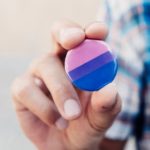 Bisexuality is the romantic attraction, sexual attraction, or sexual behaviour toward both men (males) and women (females). A bisexual person may be attracted to one gender more than another, equally attracted to all genders, or may consider gender unimportant in terms of attraction. Furthermore, a person’s attraction toward one gender or another may shift over time.
Bisexuality is the romantic attraction, sexual attraction, or sexual behaviour toward both men (males) and women (females). A bisexual person may be attracted to one gender more than another, equally attracted to all genders, or may consider gender unimportant in terms of attraction. Furthermore, a person’s attraction toward one gender or another may shift over time.
Though this is changing, bisexual men and women have often been forgotten or seen as an after-thought within the LGBT+ community. This is strange, given it’s the third letter in LGBT!
Bisexual men and women are also characterised as people who don’t exist or are “just going through a phase”, “sexually greedy”, “gay really”, or “can’t make up their mind”. These views are untrue and disrespectful.
Be an ally
- Ask questions, pick up a book, watch a film
- Use inclusive language
- Learn and educate others
- Call out biphobia
- Remember 23 September, Bi Visibility Day
The bisexual flag
The bisexual pride flag was designed by Michael Page in 1998 to give the bisexual community its symbol comparable to the gay pride flag of the larger LGBT community. He aimed to increase the visibility of bisexuals, both among society as a whole and within the LGBT community. The pink represents gay or homosexual attractions, the blue represents attractions to different genders, and the purple (in the middle) represents attraction regardless of sex or gender.
23 September: Bi Visibilty Day | Bi Visibility Day
Bisexuality | bisexuality.org (US website) Bi Pride UK
Bi Pride UK | MEN R US Bisexual Man Embraces Sexual Fluidity | ImFromDriftwood | 30 May 2021 | 6m 52s
I’m Bisexual, But I’m Not… | Buzz Feed | 11 Oct 2015 | 2m 5s
Bi the way, we exist | Viet Vu | TEDxTerryTalks | 24 Feb 2015 | 15m 44s LGBT+ Glossary | MEN R US
Check out our awesome glossary of LGBT+ words and terms.
More
A short history of the word ‘bisexuality’ | Stonewall | 31 Jan 2022I make my bisexuality clear to new dates. With most women, that disclosure signals the end | The Guardian | 19 Jul 2021
22 things you should read for bisexual awareness week | Pride | 24 Sep 2018
Is bisexuality real? (Yes, obviously) | Pink News | 28 May 2017
6 Truths of Bisexuality | Huff Post | 23 Oct 2016
13 things never to say to bisexual people | Advocate | 23 Sep 2016
Bisexuality: All you need to know about bivisibility | BBC Newsbeat | 23 Sep 2015
Bi visibility day: 23 September | bivisibility.com Back to top
Trans and transgender
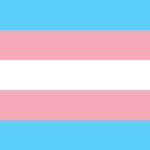 Trans and transgender individuals have a gender identity or gender expression that differs from the sex that they were assigned at birth.
Trans and transgender individuals have a gender identity or gender expression that differs from the sex that they were assigned at birth.
A trans man is a term used to describe someone who is assigned female at birth but identifies and lives as a man. This may be shortened to trans man, or FTM, an abbreviation for female-to-male.
A trans woman is a term used to describe someone who is assigned male at birth but identifies and lives as a woman. This may be shortened to trans woman, or MTF, an abbreviation for male-to-female.
Transitioning are the steps trans people take to live in the gender with which they identify. One person’s transition may vary from another; for some, this involves hormone therapy and surgeries, though not all trans people want or are able to have this. Transitioning can also involve telling friends and family, dressing differently, and changing official documents.
Transphobia is the fear or dislike of someone based on the fact they are trans, including denying their gender identity or refusing to accept it. Transphobia may be targeted at people who are, or who are perceived to be, trans.
“Transsexual” was used in the past as a more medical term (similar to homosexual), but it is outdated and many find its use offensive.
London Trans Pride | London Trans Pride
UK Trans Pride | MEN R US
